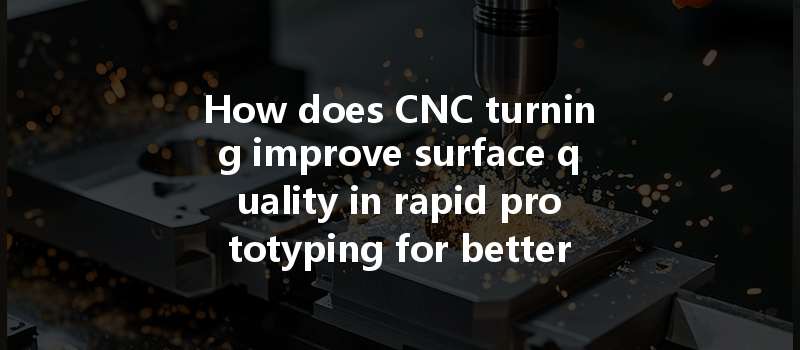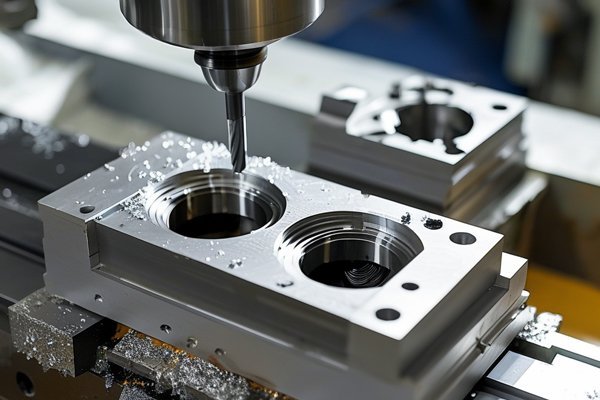Opening:
Did you know that approximately 39% of manufacturers consider rapid prototyping critical for their market responsiveness? In an era where time equals money, companies are turning to advanced techniques to create high-quality prototypes quickly and efficiently. Among these techniques, CNC (Computer Numerical Control) turning plays a pivotal role in enhancing surface quality, which can ultimately make or break the success of a product.
In this blog, we will delve deep into the world of CNC turning, explore its influence on surface quality in rapid prototyping, and provide detailed insights into optimizing this process for better end products.
—
Understanding CNC Turning in Rapid Prototyping
CNC turning is a machining process where material is removed from a rotating workpiece using cutting tools. This technique is widely embraced in the world of rapid prototyping due to its ability to produce intricate designs with high precision. But how does CNC turning specifically improve surface quality?
CNC turning machines are controlled by software that allows for precise movements and measurements. This precision is vital in rapid prototyping, where minute variations can significantly affect the product’s performance. Unlike traditional machining methods that rely heavily on human skill and experience, CNC enables consistent results with minimal error margins.
Modern CNC lathes operate at incredibly high speeds, allowing for efficient material removal while maintaining surface integrity. The heat generated during machining can affect the surface quality, but advanced cooling techniques implemented in CNC turning can mitigate this issue. High-speed machining reduces the overall lead time significantly, giving manufacturers the opportunity to iterate designs rapidly.
The choice of tooling is crucial in CNC turning. High-quality carbide or ceramic tools can provide a finer finish on the machined surface. Additionally, specialized tools designed for specific materials can help minimize burrs and tool marks that can compromise surface quality.
Every material has its own ideal cutting parameters. Understanding the correct feeds and speeds not only increases productivity but minimizes the chances of damaging the workpiece’s surface. Adjusting these factors based on the material being used is essential to obtain the desired surface quality.
Achieving Optimal Surface Quality
Now that we understand the fundamentals of CNC turning, let’s outline specific methods for optimizing surface quality during rapid prototyping:
Method 1: Material Selection
Different materials respond uniquely to CNC turning processes. For instance, metals like aluminum and brass offer excellent machining characteristics and surface finishes, while harder materials like titanium might require more adjustment. Make sure to select materials not only suitable for functional objectives but also compatible with high surface quality standards.
Conduct thorough research on how different alloys and plastics behave when subjected to CNC turning. This understanding allows for informed adjustments in machining parameters that produce superior surface quality.
Method 2: Machine Calibration

Just like any precision tool, CNC machines require routine maintenance to operate at peak performance. Regular checks on machine calibrations, alignment, tool changes, and software updates are essential for mitigating inaccuracies that can adversely affect surface quality.
Before starting a production run, conducting test cuts can help validate machine settings. Analyze the results to see if adjustments are needed to meet surface quality specifications.
Method 3: Advanced Coatings
Utilizing enhanced coatings on CNC tools can substantially improve surface integrity. Coatings such as TiN (Titanium Nitride) or TiAlN (Titanium Aluminum Nitride) can enhance tool life and maintain surface smoothness by reducing adhesion between the tool and material.
Method 4: Post-Processing Techniques
After the CNC turning operation, using secondary processes such as polishing, grinding, or anodizing can further enhance the surface quality. These techniques fill in any minor imperfections, leading to a smoother, finer finish.
Implementing stringent inspection methodologies post-machining will ensure that all prototypes meet the required surface finish and dimensional tolerances. Techniques such as 3D scanning and laser measurement can efficiently verify the surface quality.
The Role of Feedback Systems in CNC Turning
One significant evolution in CNC turning is the incorporation of real-time feedback systems. These systems allow manufacturers to monitor machining processes dynamically, identifying parameters that may require adjustment to maintain optimal surface quality.
Such systems can automatically adjust feeds and speeds in real time based on feedback derived from surface finish measurements. This adaptability ensures that quality standards are consistently met without manual intervention.
Leveraging data collected during the CNC turning process through IoT (Internet of Things) technologies can provide insights about tooling wear, optimal settings, and surface performance. This information can be crucial for continuous improvement practices.
: The Way Forward in CNC Turning for Rapid Prototyping
In conclusion, CNC turning plays an indispensable role in improving surface quality in the realm of rapid prototyping. By focusing on precision control, high-speed machining, tool selection, and the implementation of optimized techniques, manufacturers can produce prototypes with enhanced surface integrity and functionality.
As industries continue to innovate and the demand for quality increases, the ability to ensure superior surface quality through refined CNC processes will remain a cornerstone of successful manufacturing strategies.
This blog highlights not only the critical aspects of CNC turning but also serves as a reminder of the vital role that surface quality plays in the product development lifecycle. For companies aiming to improve their prototypes and ultimately their end products, understanding and implementing effective CNC turning practices cannot be overlooked.
By remaining informed and proactive in these methodologies, manufacturers can position themselves at the forefront of a competitive market, ultimately driving innovation and ensuring customer satisfaction. As you ponder upon these findings, ask yourself: how can the integration of advanced CNC turning processes elevate your product quality and production efficiency?






